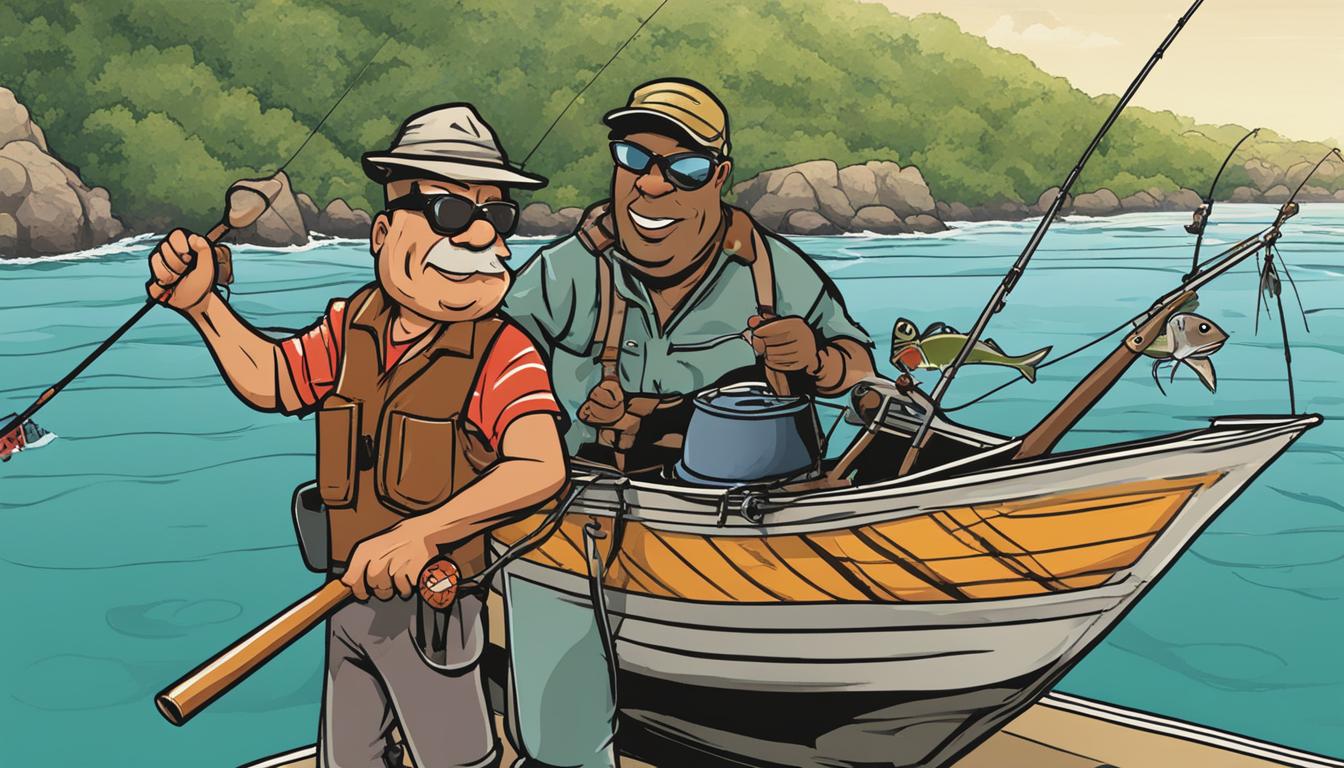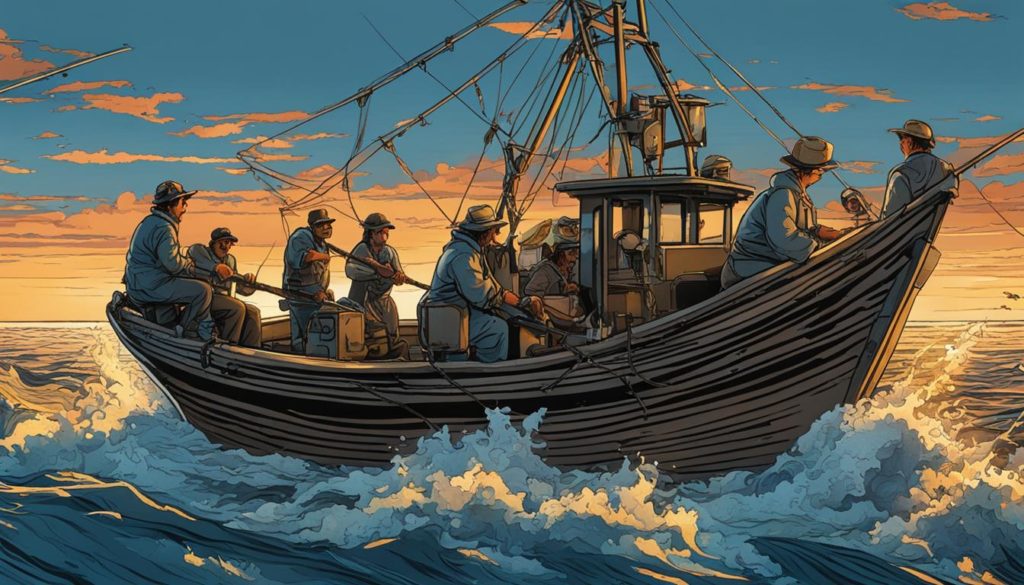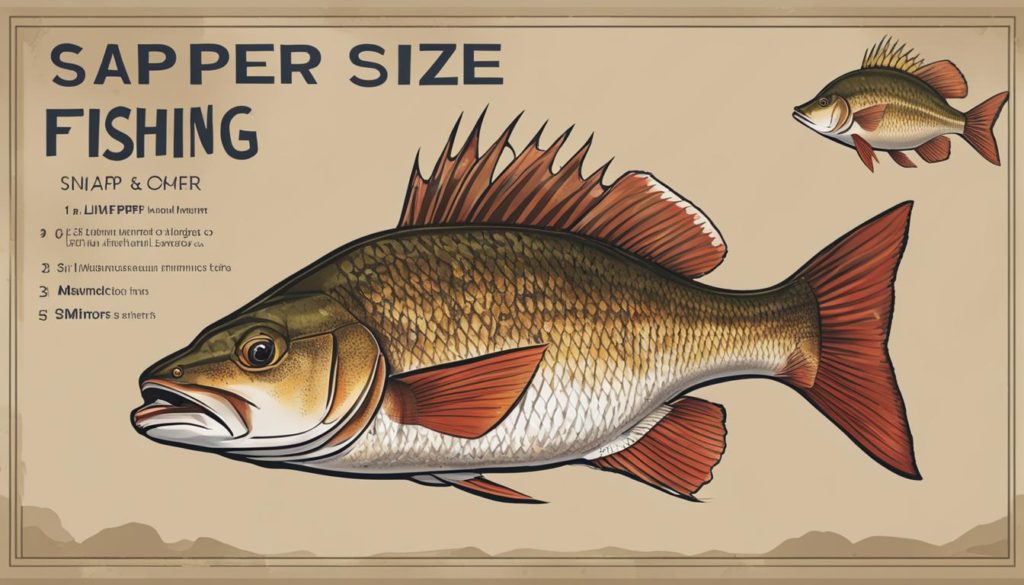Snapper fishing has long been a popular pastime for both novice and experienced anglers, largely due to the feisty nature and delicious taste of these sought-after fish. Whether you’re targeting the fast-growing and aggressive snapper blues or the prized red snapper, learning how to catch snapper effectively can provide you with hours of enjoyment on the water and a rewarding bounty of fish to take home. In this article, we’ll share with you top tips and techniques for catching snapper easily, ensuring more snapper fishing success in your future angling adventures.
Key Takeaways
- Differentiate between snapper varieties and their unique habitats for targeted fishing strategies.
- Equip yourself with the right gear and tackle specifically tailored for snapper.
- Sharpen your casting and retrieval techniques to optimize your chances of catching snapper.
- Understand the legal considerations, such as size and catch limits, to avoid penalties and promote conservation.
- Learn the advantages of shore fishing versus charter fishing for snapper to determine the best approach for your desired experience.
Introduction to Snapper Fishing
Targeting snapper species, like the snapper blues synonymous with novice angler introduction and the highly prized red snapper, embodies the essence of saltwater fishing exhilaration. Such fishing often begins in late summer, reflecting on days casting from jetties and experiencing the delight of landing snappers that can feed a family. Both varieties offer unique challenges, requiring specific strategies for successful catches.
Embarking on a snapper fishing adventure can seem daunting at first, but by breaking down the process into manageable steps, you’ll be well on your way to reeling in these prized catches. In this section, we’ll provide some essential snapper fishing tips to help you get started and introduce you to two popular types of snapper you might encounter.
Snapper fishing offers an adrenaline-packed experience for beginners and experts alike as they pursue these fast-growing and feisty creatures.
- Understand snapper species: Familiarize yourself with the characteristics, habitats, and behaviors of different snapper species in your target area. This knowledge will help you fine-tune your approach and increase your chances of success.
- Choose the right gear: Select appropriate rods, reels, and tackle based on the species you’re targeting and the depth of the water you’ll be fishing in. This will ensure you have the right tools to handle the fight snappers are known for.
- Perfect your technique: Learn various casting and retrieval methods, as well as effective ways to use live bait and artificial lures. This will help you appeal to snappers’ predatory instincts and entice even the wiliest of fish to bite.
- Do your research: Investigate prime snapper fishing spots in your area, taking note of their proximity to structures like jetties, piers, and reefs. These are popular hangouts for snappers, making them prime fishing spots for anglers.
Armed with these snapper fishing tips, your introduction to snapper fishing will be off to a great start. Remember that practice makes perfect, so don’t be discouraged if you don’t land a whopper on your first outing. With time and persistence, you’ll improve your skills and soon be landing impressive catches worth bragging about.
The Different Types of Snapper and Their Habitats
Understanding Snapper Varieties
There are several types of snapper, but two distinct varieties that often create confusion for novice anglers are the snapper bluefish, also known as juvenile bluefish, and the red snapper. These two varieties of snapper are not separate snapper species, but rather different forms of snapper fish.
Both snapper bluefish and red snapper are admired for their feisty nature and rapid growth. Snapper blues become “catchable” at around 5 inches long, making them a popular choice for anglers during late summer. On the other hand, the red snapper provides challenging catches due to their propensity for deeper waters and vigilant conservation efforts.
Popular Snapper Habitats
Understanding the different snapper fishing habitats and snapper location is essential when targeting these popular species. Snapper blues can be found close to shore during late summer, frequenting estuaries and structures like rock piles, docks, and jetties. Their affinity for structures and inshore habitats makes them an accessible target for novice anglers.
Conversely, red snapper inhabit various depths, ranging from 30 to 200 feet. These fish are often associated with piers, seawalls, and wreckage. Savvy anglers have recognized these creatures’ fondness for artificial structures and take advantage of their habit of returning to specific snapper fishing spots.
“Both snapper bluefish and red snapper are admired for their feisty nature and rapid growth.”
In the pursuit of different types of snapper, pay close attention to their distinct habitats and behaviors. It is essential to understand the various snapper habitants for these species so you can increase the success of your snapper fishing.
Best Times of the Year for Snapper Fishing
As an avid fisherman, you’re aware that knowing the perfect time to fish for any species is essential for success. When it comes to snapper fishing season, the optimal time varies depending on the type of snapper you’re targeting. Snapper blues and red snappers, for instance, have different peak fishing seasons.
For snapper blues, the prime time for fishing is from late July through early August. During this period, the young-of-the-year reach catchable sizes and exhibit fierce feeding behaviors, making it an exciting and rewarding time to fish for them.
On the other hand, the red snapper fishing peak season aligns with their spawning season, which generally occurs in the summer months. You’ll find the best chances of catching red snappers during June and July, during which federal and state fishing seasons are typically most accommodating for anglers.
So, when to fish for snapper? Late July through early August for snapper blues and June and July for red snappers to get the best yields.
Besides the peak seasons for these snapper varieties, you can also improve your snapper fishing success by utilizing proper fishing gear, techniques, and location scouting. By combining these key factors, you’ll increase your chances of landing impressive catches, whether you’re targeting snapper blues or red snappers, during their respective peak seasons.
Choosing the Right Snapper Fishing Gear
Equipping yourself with the appropriate snapper fishing gear and tackle for snapper can significantly increase your chances of success. Different gear is required for snapper blues and red snapper to accommodate their distinct behaviors and habitats.
“A light spinning outfit with a selection of small metal lures is ideal for snapper blues. Anglers looking to catch red snapper can benefit from heavy-duty poles and baits like cigar minnows and pilchards, suitable for deeper drops.”
When it comes to choosing the appropriate snapper fishing equipment, essential components include:
- Circle hooks
- Sturdy, versatile reels
- A variety of lures
Below is a table outlining some recommended gear specific to each snapper species:
| Snapper Blues | Red Snapper | |
|---|---|---|
| Rods | Light spinning rods | Heavy-duty, deep-sea rods |
| Reels | Spinning reels | Conventional reels |
| Lures | Metal jigs (Kastmaster, Hopkins, or Deadly Dick) | Vertical jigs |
| Live Baits | Not generally required | Cigar minnows, pilchards, live pogies |
| Terminal Tackle | Circle hooks, fluorocarbon leader with snaps, barrel swivel | Circle hooks, fluorocarbon leader with snaps, barrel swivel |
Remember, practice makes perfect. Familiarize yourself with your chosen snapper fishing gear and equipment and stay persistent, as mastery comes with time on the water. Keep refining your technique and experimenting with various tackle to improve your snapper fishing prowess.
Snapper Fishing Techniques for Beginners
For those just starting out in their snapper fishing journey, it is essential to begin with easy-to-follow techniques that are both effective and enjoyable. In this section, we will cover the basics of casting and retrieval, as well as discuss the pros and cons of using live bait versus artificial lures for snapper fishing.
The Basics of Casting and Retrieval
For beginner casting, small metal lures are effective when targeting snapper blues, whether you are fishing from shore or a boat. To imitate injured baitfish, cast the lures with varying retrieval speeds. Pay attention to the snapper’s response, and adjust the retrieval rate accordingly.
Remember to practice your casting technique to ensure a smooth and accurate cast, improving your chances of attracting snapper.
When it comes to retrieval, follow these easy snapper casting tips:
- Gradually reel in the lure while maintaining a consistent speed.
- Pause and allow the lure to sink, imitating the movements of a wounded baitfish.
- Rapidly reel in the slack line to create a jerking motion, drawing the attention of nearby snapper.
Using Live Bait vs. Artificial Lures
Each snapper species may respond differently to live bait and artificial lures, so understanding which works best for the type of snapper you are targeting is essential.
Live Bait:
With red snapper, live bait is often more successful due to their preference for live prey. Popular live baits for snapper fishing include:
- Cigar minnows
- Pilchards
- Live pogies
When using live bait, consider a snapper rig or a “snapper popper” for casting. After casting, wait patiently for the strike.
Artificial Lures:
Artificial lures can be highly effective for snapper blues, with these tin lures being popular choices among experienced anglers:
- Kastmaster
- Hopkins
- Deadly Dick
In conclusion, mastering beginner casting techniques, along with learning how to retrieve snapper effectively, will build a strong foundation for your snapper fishing journey. Additionally, understanding each snapper species’ preference for live bait versus artificial lures can drastically improve your overall snapper fishing success.
Advanced Tips for Catching Snapper
To improve your chances of successfully targeting big snapper, you need to apply advanced snapper fishing strategies and professional snapper techniques that go beyond the basics. Experienced anglers often seek out undisturbed areas with prominent bottom structures, as these spots are more likely to harbor large red snappers. Let’s explore the crucial factors that can set you apart from novice anglers and increase the likelihood of hooking a trophy-sized snapper.
Advanced anglers often select isolated areas with significant bottom structures to target large red snapper. Locating prime habitats that have remained unfished for prolonged periods increases the likelihood of hooking trophy-sized snapper. Experienced captains emphasize the importance of identifying high-relief areas on the snapper banks for successful big red snapper fishing.
Finding Prime Snapper Habitats: Beyond the Basics
While some anglers might rely on common spots or already-explored areas to find snapper, expert fishers know the importance of exploring new territories for better results. To locate prime snapper habitats, consider the following tips:
- Invest in a high-quality fishfinder to locate structure and identify potential snapper hot spots.
- Conduct research on the regional snapper habitat, paying close attention to any submerged structures, such as shipwrecks, reefs, or oil platforms.
- Join local fishing forums or social media groups to gather insights and recommendations from fellow anglers.
- Regularly review nautical charts, keeping an eye out for any previously undiscovered high-relief zones.
Professional Snapper Fishing Techniques
Once you’ve identified the ideal location, it’s essential to apply professional snapper fishing techniques to increase your chances of success. Here are some advanced strategies to consider:
- Use a combination of chumming and freelining live bait to attract snapper from a distance and to the surface.
- Pay close attention to the water current, and make sure your bait drifts naturally with the flow.
- Opt for low-visibility fishing lines and fluorocarbon leaders to keep your presentation as natural as possible.
- Experiment with different types of bait, varying between live, dead, and cut bait, to identify what the snapper are most interested in.
Patience and Timing
Targeting large snapper requires patience and persistence. Trophy-sized snappers are often more cautious than their smaller counterparts, so take your time, refine your strategy, and remember that success won’t always come immediately. By continually honing your skills, expanding your knowledge, and employing these advanced techniques, you’ll increase your chances of consistently catching big snapper.
Top Lures and Baits for Snapper Fishing
When it comes to snapper fishing, the choice of lures and baits can make a significant difference in your catch success. In this section, we’ll discuss the best lures and baits for snapper fishing, focusing on selecting the ideal options for both snapper blues and red snapper.
Selecting the Best Lures for Snapper
For snapper blues, Kastmaster lures are highly recommended by seasoned anglers due to their proven effectiveness in attracting these feisty fish. Other useful lures for snapper blues include:
- Metal lures, such as Hopkins and Deadly Dick
- Small jigs and poppers, perfect for imitating wounded prey
- Soft plastics, particularly when combined with small jig heads
On the other hand, red snapper are often enticed by lures that are specifically designed for use in deeper waters. Some popular lures for red snapper include:
- Vertical jigs, ideal for targeting fish in deeper water columns
- Heavy spinning or baitcasting tackle, perfect for enticing snapper from their hiding spots beneath structures
- Deep-diving crankbaits and swimbaits, designed to imitate various snapper prey
Expert Advice on Snapper Fishing Baits
While artificial lures can be very effective for snapper fishing, live bait is often the top choice for attracting these clever fish. For red snapper, experts suggest using:
- Cigar minnows
- Pilchards
- Live pogies
- Butterflied blue runner
- Ribbonfish
These live bait options are particularly appealing to red snapper due to their natural preference for live prey. On the other hand, for snapper blues, using pieces of silverside on metal lures can be a successful tactic when lures alone do not suffice.
With a solid understanding of the most effective snapper lures and bait, you’ll be well-equipped to face the challenges of snapper fishing. Be sure to experiment with different lure and bait combinations to find what works best for your target species and local fishing conditions.
Legal Considerations and Size Limits for Snapper Fishing
Anglers targeting snapper species need to be mindful of legal considerations, such as catch limits and size restrictions. With snapper blues, a 10-fish limit is imposed, while red snapper fisheries have witnessed federal regulation adjustments due to their popularity, necessitating attentiveness to both federal and regional regulations.
Note: Legal regulations are subject to change; always consult the latest guidelines before heading out for a snapper fishing trip.
Know the laws, follow the rules, and enjoy a responsible and sustainable snapper fishing experience.
Here is a summary of the current snapper fishing regulations:
| Snapper Species | Catch Limit | Minimum Legal Size |
|---|---|---|
| Snapper Blues | 10 fish per day | Variable, check local regulations |
| Red Snapper | Variable, based on federal and regional quotas | 16 inches (40.64 cm) for recreational anglers |
Beyond size and catch limits, other snapper fishing regulations may apply. For example, when catching red snapper, recreational anglers are mandated to use non-stainless steel circle hooks when fishing with natural bait to facilitate safer release and reduce injury to the fish.
It is crucial for anglers to follow snapper fishing regulations in order to maintain healthy fish populations and ensure that future generations can continue to enjoy this exciting and rewarding sport. By staying informed and being respectful of the rules, you are contributing to the conservation of these beloved species.
How to Safely Handle and Release Snapper
Whether you’re fishing for snapper blues or red snapper, it’s crucial to handle your catch with care and practice proper catch-and-release techniques. These practices ensure the ongoing health and conservation of these delicate species. Here, we’ll explore some key guidelines for safely releasing snapper and handling them with care.
Snapper blues are notorious for their snapping jaws, so it’s essential to remain cautious when handling them. You should use a sturdy pair of fish grip gloves or pliers to avoid injury to both you and the fish. When releasing snapper blues, gently hold them horizontally in the water until they regain their strength and swim away.
In contrast, red snapper tend to be more fragile, so it’s all the more important to use proper handling techniques. One of the most effective ways to ensure safe release and a high survival rate is to use circle hooks. These hooks reduce the chances of deep hooking and make it easier to unhook the fish quickly and with minimal damage.
Remember: The longer a fish is held out of water or handled, the more stress it experiences, reducing its chances of survival upon release.
For both snapper blues and red snapper, follow these guidelines to ensure their long-term wellbeing:
- Always wet your hands before handling the fish to minimize damage to their protective slime.
- Use a dehooking device for a quick, safe, and painless removal of the hook.
- Return fish to the water promptly and avoid taking unnecessary photos or measurements, as these actions prolong the release process.
- Never hold the fish vertically or by the gills or eyes, as this can cause internal harm and stress.
By adhering to these guidelines, you’re playing your part in snapper conservation efforts and ensuring that future generations of anglers can also experience the thrill of catching these feisty, prized fish.
Snapper Fishing from Shore vs. Charter
When it comes to snapper fishing, anglers have two primary options at their disposal: fishing from the shore or embarking on a snapper fishing charter. Both options have their unique set of advantages and strategies, which we will delve into in this section.
Shore Fishing Strategies for Snapper
Shore-based snapper fishing is a popular choice for anglers looking to catch snapper blues or even red snapper while staying close to land. Some strategies to employ when fishing for snapper from the shore include:
- Using poppers
- Fishing with tin lures
- Aiming for structures where snappers congregate
- Identifying hot spots and employing chumming strategies for red snapper
- Snapper shore casting techniques
When catching snapper from shore, it’s crucial to stay aware of your surroundings, routinely assess water conditions, and keep an eye out for any changes that may influence the fish’s movements.
The Benefits of a Snapper Fishing Charter
For those willing to spend a bit more, charter fishing offers numerous benefits for snapper fishing enthusiasts. Some of the key advantages of snapper charters include:
- Access to deeper waters with a higher likelihood of encountering larger snapper species
- Professional guidance from experienced captains who can provide invaluable insights into the habits and locations of snappers
- Increased chances of successful catches due to expert knowledge
- The opportunity to retain your catch and acquired learning for future fishing adventures
By participating in snapper charter excursions, anglers can leverage the expertise of seasoned professionals and significantly increase the chances of landing a prized catch.
A wise angler once said, “The more you learn, the more fish you’ll catch.”
Ultimately, the choice between shore vs charter snapper fishing boils down to personal preferences, time, and budget constraints. Whether you’re a shore fisherman enjoying the thrill of casting lines for snapper blues or an angler on a snapper fishing charter targeting big red snapper, the joy of fishing these feisty species remains the same.
Conclusion
In summary, mastering snapper fishing is an enjoyable and exciting endeavor, whether you are targeting the feisty snapper blues or the coveted red snapper. By employing the right gear, honing your techniques, and keeping abreast of legal regulations, you set yourself up for a successful snapper fishing experience.
Concluding snapper tips highlight the importance of understanding the various snapper species, their habitats, and the best times of the year to fish for them. Whether fishing from shore or on a charter, equipping yourself with suitable gear and employing effective baiting and luring strategies will improve your chances of catching these sought-after fish.
Ultimately, snapper fishing success lies in a combination of knowledge, skill, and a genuine passion for the sport. By embracing the challenges and rewards associated with snapper fishing, you can look forward to creating lasting memories and cultivating your expertise in this thrilling pastime. So get out there and put these tips into practice, and you’ll be well on your way to snapper fishing success.
FAQ
What are the differences between snapper blues and red snapper?
Snapper blues are juvenile bluefish found close to shore in late summer, while red snapper are a Gulf favorite that inhabit various depths and often reside near artificial structures. These two species are sometimes misidentified as separate types of snapper.
When is the best time of the year to go snapper fishing?
For snapper blues, late July through early August is the prime time, as they grow to catchable sizes and display ferocious feeding behaviors. Red snapper peak season aligns with their spawning season, particularly June and July, when federal and state fishing seasons are most accommodating for anglers.
What gear do I need for snapper fishing?
A light spinning outfit with small metal lures works best for snapper blues. For red snapper, heavy-duty poles, circle hooks, and baits like cigar minnows and pilchards are more appropriate. Sturdy reels are also necessary to manage the snapper’s vigorous fight.
How do I choose the right lure and bait for snapper fishing?
Tried-and-true lures like Kastmaster are highly recommended for catching snapper blues. Vertical jigs and heavy spinning or baitcasting tackle can be effective for red snapper, especially in shallow waters. Experts suggest using live bait such as cigar minnows, pilchards, or live pogies for red snapper due to their preference for live prey.
What are the legal considerations and size limits for snapper fishing?
Anglers targeting snapper species need to be mindful of catch limits and size restrictions. A 10-fish limit is imposed for snapper blues, while red snapper fisheries are subject to changes in federal and regional regulations due to conservation efforts.
How can I safely handle and release snapper?
When handling snappers, especially snapper blues, be cautious of their snapping jaws. Employ proper catch-and-release practices to ensure their survival. For red snapper, using circle hooks can facilitate a safer release and increase survival rate post-catch.
Should I go on a snapper fishing charter or fish from the shore?
Fishing from the shore can be an enjoyable experience catching snapper blues using appropriate techniques. However, charter fishing for red snapper offers the advantage of accessing deeper waters along with the guidance of skilled captains, increasing your chances of a successful catch.




